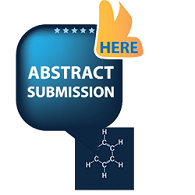Dilip K. Maiti
University of Calcutta, India
Title: Smart Organic Nanomaterials, Sensors and Devices
Biography
Biography: Dilip K. Maiti
Abstract
The area of nanoscience and nanotechnology has grown tremendously over the past two decades and is expected to expand rapidly in the near future. Organic nanomaterials have several advantages over inorganic counterpart. Organic nanomaterial-products are lighter, more flexible, biodegradable, ease for fabricating devices, less expensive, non-magnetic and easily be purified. Semiconducting, electronic and optoelectronic properties can easily be modified through changing size, shape, chemical structure, morphology and installation of a wide range of functional groups, which in turn generates innovative semiconducting, conducting, photoluminescence, storage, display and sensing performances to achieve highly efficient devices. Consequently, organic nanomaterials open up the door to many exciting and advanced new applications that would be impossible using inorganic materials. Thus, design and synthesis of new organic compounds, their fabricated unidirectional materials and development of new electronic property are desirable for achieving organic electronics-based high-tech devices of ultimate sensitivity and day-to-day usable innovative component. We have developed organic nanofibrils as a sensing device for lethal gaseous phosgene, detecting health pollutant cyanide in water, luminescent material for inkless writing and self-erasing application, nanofiber-based materials for crossbar devices to achieve organic resistive random access memory (RRAM) and write-once-read-many-times (WORM) memory devices for non-editable database, archival memory, electronic voting, and radio frequency identification (RFID) applications.

